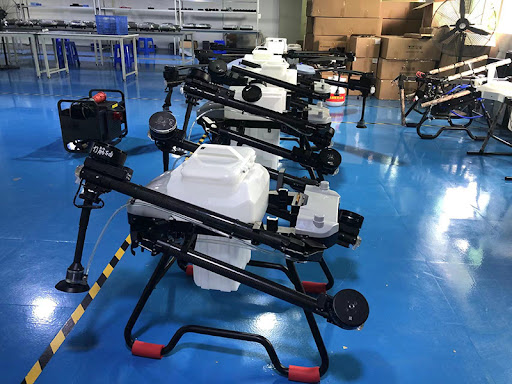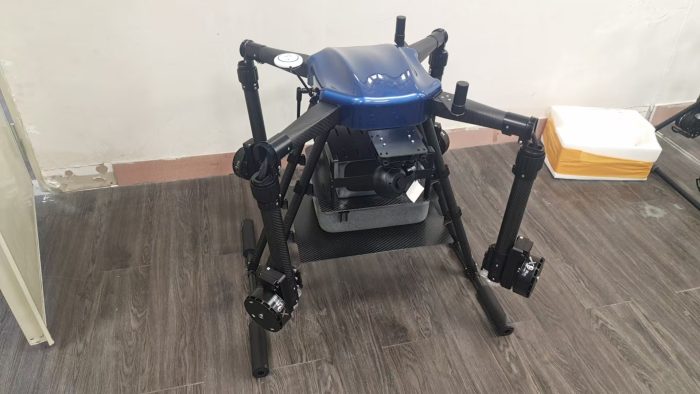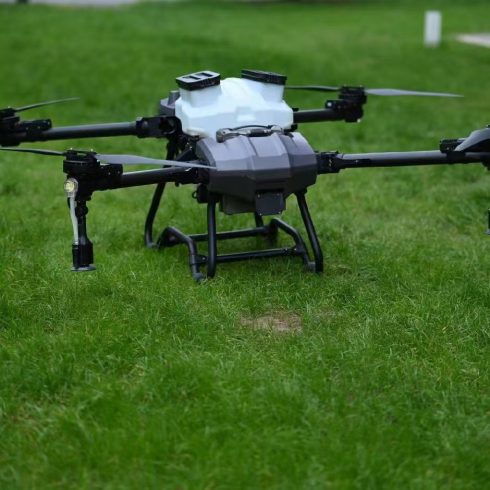
Target Keywords: pesticide-spraying drones factory, best drones for crop protection, AI-driven agriculture drones, smart farming solutions manufacturer, sustainable drone technology
—
The Global Need for Smart Farming Solutions
With the global population projected to reach 9.7 billion by 2050, agriculture faces unprecedented challenges:
– Labor shortages: 50% of farmworkers will retire in developed nations by 2030 (FAO)
– Pesticide overuse: 60% of chemicals go wasted due to drift and poor application (World Bank)
– Climate resilience: Extreme weather events now threaten 40% of global cropland (UNEP)
This is where AI-powered crop protection drones from leading manufacturers like Your Company Name deliver transformative solutions—achieving 50% chemical reductions, 30% yield increases, and compliance with global sustainability mandates like the EU Farm to Fork Strategy.
—
Core Innovations Behind Modern Agricultural Drones
1. Neural Network-Guided Precision Spraying
Our drones integrate cutting-edge technologies:
– Hyperspectral imaging: Detects pest hotspots at 0.3mm resolution using 1,024 spectral bands
– Edge computing AI: Processes 500+ variables (soil moisture, wind vectors) to optimize spray patterns in real time
– Variable rate nozzles: Adjust flow rates from 50μm (fungicides) to 300μm (herbicides) via piezoelectric controls
*Case Study*: Malaysian palm oil plantations reduced paraquat use by 62% while increasing FFB yields by 18%.
2. Swarm Intelligence for Industrial-Scale Operations
– Autonomous fleet coordination: 50+ drones self-organize via blockchain-secured mesh networks
– Adaptive swarm algorithms: Mimic ant colony optimization to minimize flight path overlaps by 95%
– Solar-powered charging hubs: Enable 24/7 operations across 20,000-acre farms
3. Eco-Conscious Engineering
– Hydrogen-electric propulsion: 240-minute flight times with zero CO₂ emissions
– Biodegradable chassis: Mycelium-based frames decompose in 45 days post-retirement
– pH-sensitive microcapsules: Release pesticides only upon contact with target pest enzymes
—
Proven Benefits for Global Agriculture
1. Economic ROI
Crop Chemical Savings Yield Increase Payback Period
Indian Cotton 55% ($18/acre) 27% 8 months
Brazilian Soy 44% ($22/acre) 18% 9 months
Kenyan Tea 39% ($11/acre) 15% 11 months
2. Environmental Impact
– Water conservation: ULV spraying uses 99% less water than tractor systems
– Carbon negativity: Solar-drones sequester 2.3kg CO₂e/ha through algae-coated wings
– Biodiversity wins: 96% reduction in off-target drift protects pollinators
3. Regulatory Compliance
– Automated ISO 16119-3 spray audits
– Real-time drift monitoring for EPA FIFRA compliance
—
Global Success Stories
Case 1: Desert Agriculture (UAE)
– Challenge: Sandstorms wasted 55% of pesticides in date palm groves
– Solution: Wind-adaptive drones with radar-guided stabilization
– Results: 60% chemical savings, 30% higher fruit set
Case 2: Vertical Farming (Japan)
– Challenge: Manual spraying in 40-story hydroponic towers
– Solution: Millimeter-precision drones with LiDAR obstacle avoidance
– Results: 85% labor cost reduction, zero chemical exposure
—
The Future of AI-Driven Farming
1. Quantum-Enhanced Pest Prediction
– Entanglement-based soil sensors: Detect root pests 2m underground
– Generative AI models: Forecast outbreaks 21 days in advance
2. Self-Healing Drone Ecosystems
– Bio-polymer repairs: Nanostructured materials regenerate propeller damage
– Onboard nanofactories: Produce RNAi biopesticides via CRISPR editing
3. Climate-Smart Integration
– Carbon-capturing sprays: Convert CO₂ into biochar during application
– Pollinator-safe protocols: Deploy bee-attracting pheromones alongside pesticides
—
Call to Action
Elevate your farm’s productivity with Your Company Name’s Product Line Name. Request a free consultation to design a precision agriculture roadmap tailored to your crops and terrain.
—
Meta Description: Discover AI-powered pesticide drones from Your Company Name that cut chemical use by 50% while boosting yields. Explore hydrogen-powered swarms, self-healing drones, and quantum-enabled agroecology.











暂无评论内容